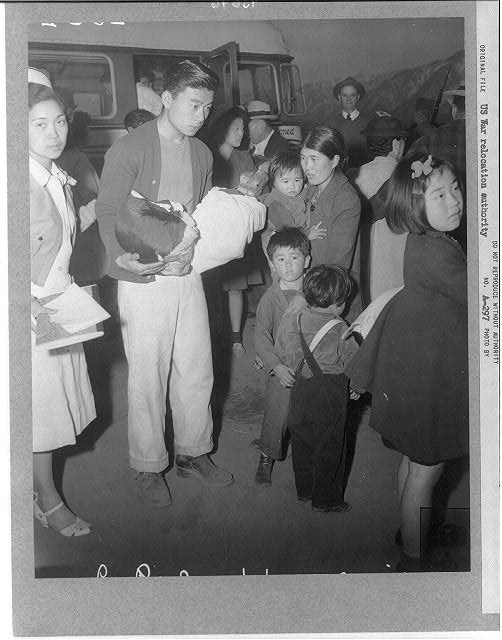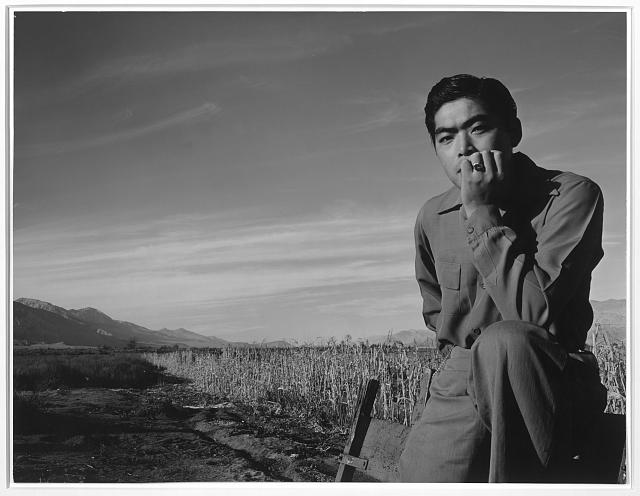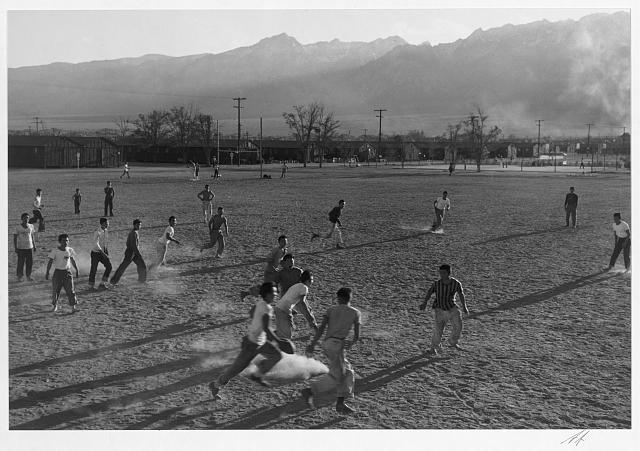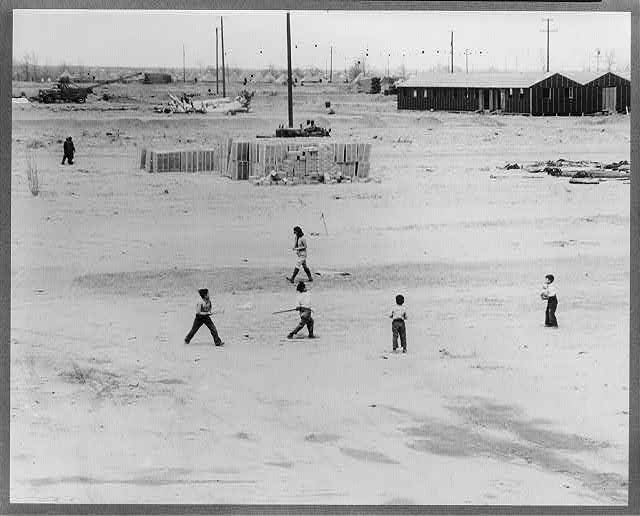Photographic Narrative, Part 1: Dorothea Lange and Ansel Adams Shoot Manzanar
Posted by Sarah Zanolini on 9th Apr 2015
Last month I ran across an interesting article in Feature Shoot magazine, asking a group of photojournalists, “has there ever been a time when you felt guilty for taking a photograph?” For the most part their short answers all clearly reflected a sharp awareness of their role as gatekeepers of a specific visual narrative. To quote one respondent, Noah Rabinowitz: “I’ve never felt guilt in making an image, only its distribution. Context is paramount to image-based communication. The more age, experience and perspective I accumulate, the more thought I put into the implications about every image I put out into the world.”
Rabinowitz’ focus on photographic context struck me strongly, as I recently finished a research course in which we analyzed the agendas informing disparate historical narratives surrounding three controversial times in California history: the Los Angeles Aqueduct, the Hetch Hetchy Reservoir, and the Japanese Internment Camp at Manzanar. What on earth does this have to do with photography, you ask? A surprising amount, at least regarding Manzanar, which just happened to have been extensively documented by two of the greatest photographers of the 20th century: Ansel Adams and Dorothea Lange.
Dorothea Lange, most famously known as the artist who documented the plight of migrant farm workers fleeing the dust bowl during the Great Depression, was commissioned by the War Relocation Authority in 1942 to document “Japanese neighborhoods, processing centers, and camp facilities,” (Library of Congress). Lange’s uncompromising eye did not shy away from capturing images that showcased the disorderly, debasing, and disorienting plight of Japanese Americans as they were forcibly evacuated from longstanding neighborhoods, into temporary processing centers, and finally shuttled into the middle of the drought ridden Owens Valley to a half-built detention center called Manzanar.
Dorothea Lange, Arrival at Manzanar, 1942:

The Library of Congress wrote, “Lange quickly found herself at odds with her employer and her subjects’ persecutors, the United States government,” for refusing to create images that sugarcoated the reality of interning Japanese-American citizens against their will - in the process stripping them of their livelihood, property, and national identity as Americans as well. “To capture the spirit of the camps, Lange created images that frequently juxtapose signs of human courage and dignity with physical evidence of the indignities of incarceration. Not surprisingly, many of Lange’s photographs were censored by the federal government, itself conflicted by the existence of the camps.”
Ultimately, no use was made of the photographs Lange took at Manzanar in 1942, and because her employer - the War Relocation Authority of the U.S. Government - owned the negatives and maintained control over their distribution, it was not until many decades after the war that any of the images were publicly exhibited.
After Lange’s documentation of Manzanar proved less than conducive for government PR purposes, Ansel Adams was called in to hopefully capture a more flattering portrait of camp life. He photographed the camp a year after Lange, in 1943, and his images were widely published the following year as a book, “Born Free and Equal.”
Ansel Adams, Portrait, 1942:

Not only was Manzanar better established by the time of his arrival, but on the whole his images seem almost intentionally to focus on the most positive aspects of life at the camp. The majority of Adams’ photographs of Manzanar utilize the Sierra Nevadas as backdrop, utilizing the single direction the otherwise barren Owens Valley landscape that was anything other than flat and dry. By using the Sierras as backdrop, Adams’ photographs come to look more like vacation snapshots than photojournalism, because in facing west to soften the hardness of the landscape surrounding remote Manzanar, Adams at the same time metaphorically softened the perceived hardship of the photos subjects. For instance, contrast Adams’ framing of a ball game with Lange’s shot of young boys playing ball below:
Adams, 1943:

Lange, 1942:

Both shots showcase boys playing in an empty dirt field, but the mood of each of these shots is very different, with Adams’ appearing more wholesome, orderly, and inviting, whereas the game Lange documented appears out of sync with the otherwise somber, desolate cast of the scene.
Furthermore, Adams’ images feature a large number of individual portraits, standing in stark contrast to the many chaotic group scenes featured in Lange’s work. In my opinion, his strong focus on individuals was an intentional effort to “put a human face” on an group that was otherwise (literally) categorically banned from American life. Whatever fears were surrounding Japan and Japanese Americans during World War II, it must have been abundantly clear to anyone involved in the War Relocation Authority that Japanese-Americans would not be able to survive in the inhospitably located camps forever, and at some point following the end of the war they would need to be reintegrated into society. Warm portraits of clean cut Japanese-Americans wearing well-kept Western clothing and participating in normalized activities like going to church, plowing fields, and playing ball, strike me as a very strong visual propaganda tool. Such easily relatable images make it easy to draw the connection that, yes, Japanese-Americans were ordinary indeed Americans indeed.
Yet, in his choice of flattering subjects and careful use of angles (west facing almost exclusively), Adams was also able to allay any worries nervous liberal types may have had over what can only in hindsight be described as an unconstitutional denial of rights - because if one were look only to his photographs for information about the history behind Manzanar, life there wouldn’t seem so bad, almost like an extended free vacation, even. To quote Adams himself regarding what he in hindsight considered to be motivation for his work, “'The purpose of my work was to show how these people, suffering under a great injustice, and loss of property, businesses and professions, had overcome the sense of defeat and dispair [sic] by building for themselves a vital community in an arid (but magnificent) environment.'”
His photographs, however, did little to build knowledge of that context. For modern viewers this underscores the importance of either presenting images with context, or taking care to embed context into an image (in the manner of Lange), lest a de-contextualized image grow to overshadow larger reality.
Nowadays, if you search the Library of Congress’ visual archives online, Adams’ are the only photographs you’ll stumble upon if you search directly for the keyword “Manzanar.” Lange’s take a little more work to get to, and given the different perspectives these two artists showcased on the same subject matter, it is little wonder the more flattering one would still receive official sanction.
Check Photo Galleries for a full view of each artists' work here:
Officially sanctioned images of Manzanar taken by Ansel Adams
Dorothea Lange’s images of Japanese relocation and internment at Manzanar
